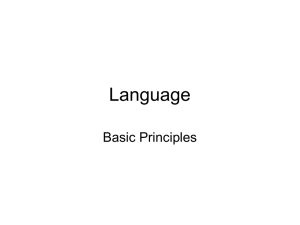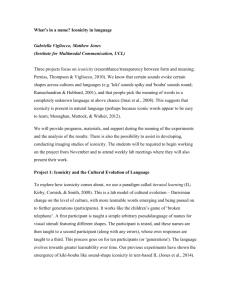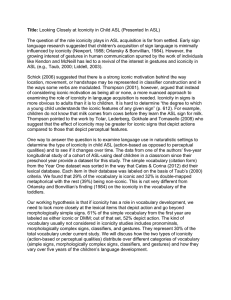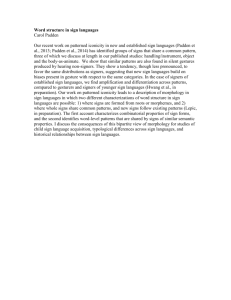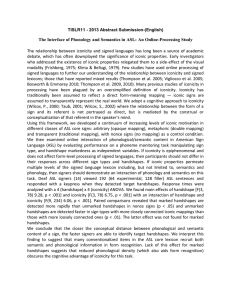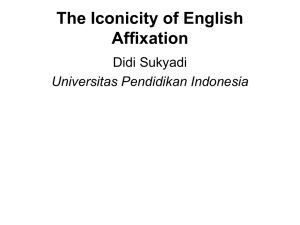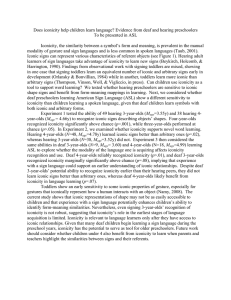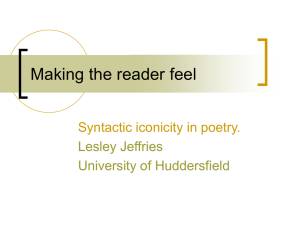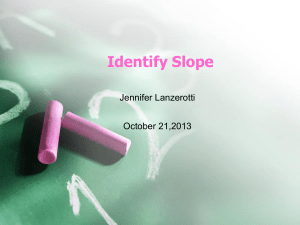2/18 notes
advertisement
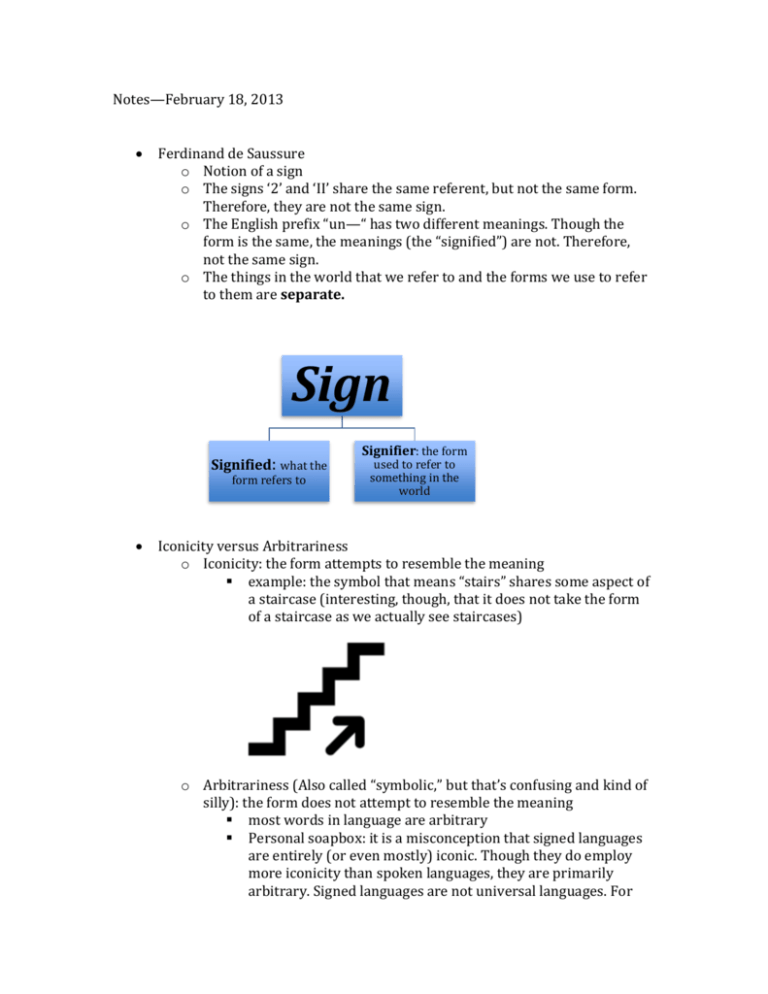
Notes—February 18, 2013 Ferdinand de Saussure o Notion of a sign o The signs ‘2’ and ‘II’ share the same referent, but not the same form. Therefore, they are not the same sign. o The English prefix “un—“ has two different meanings. Though the form is the same, the meanings (the “signified”) are not. Therefore, not the same sign. o The things in the world that we refer to and the forms we use to refer to them are separate. Sign Signified: what the form refers to Signifier: the form used to refer to something in the world Iconicity versus Arbitrariness o Iconicity: the form attempts to resemble the meaning example: the symbol that means “stairs” shares some aspect of a staircase (interesting, though, that it does not take the form of a staircase as we actually see staircases) o Arbitrariness (Also called “symbolic,” but that’s confusing and kind of silly): the form does not attempt to resemble the meaning most words in language are arbitrary Personal soapbox: it is a misconception that signed languages are entirely (or even mostly) iconic. Though they do employ more iconicity than spoken languages, they are primarily arbitrary. Signed languages are not universal languages. For instance, British Sign Language is not mutually intelligible with American Sign Language. Token versus Type o has to do with individuals versus sets o “I own that book” can be taken in two ways: “That book, right there, is mine” (Token interpretation) or “I own a copy of that book” (Type interpretation) o The above example also serves to demonstrate a distinction between natural languages and formal languages—this type of ambiguity would not occur in a formal language Example from Homework: Beth Tableaux from problem 12, b True False pq q& r q r p&q ~p p q --------------------- One subtableaux closes, but one remains open. Therefore, the statement is invalid. Counterexample: p=0, q=1, r=1. Polish Notation Symbol Etymology Meaning C A K E N Condition Alternation Conjunction Equivalence Negation Conditional Or And Biconditional Not Example of Syntax Cpq Apq Kpq Epq Np Translation pq pvq p&q p q ~p *Interesting note: While our logic system seems to mirror the SVO (Subject Verb Object) argument structure of English, the Polish notation more closely resembles a verb-first language. Note on Set Theory and language o A proposition (e.g.“It is raining”) is the set of circumstances under which the sentence is true. o however, this does not distinguish between the real world and all possible worlds—so, “gremlin” and “unicorn” would have essentially the same referent, the empty set
